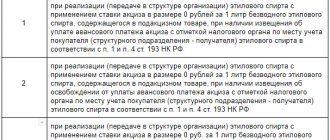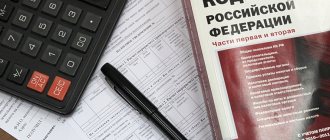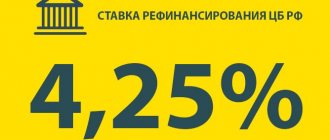Five years ago, a cheap pack of cigarettes cost 28 rubles, and an expensive one did not exceed 73 rubles. Today the average cost of one pack is 110 rubles. The price of nicotine increases every year due to an increase in indirect tax. Excise taxes on tobacco increased by 10 percent in 2021. There was a similar increase in 2021. An increase in the tax burden of 10-15% has been in effect annually since 2013. The excise tax on cigarettes was introduced by the state in conjunction with a ban on smoking in public places and the fight against nicotine addiction of citizens throughout the country. According to WHO (World Health Organization) research, a 10% increase in tax provokes a 5% decrease in nicotine consumption.
Excise goods of tobacco products
The tax does not only apply to filter cigarettes. The excise duty applies to types of tobacco, electronic smoking devices and smoking liquids. Tobacco for which tax is paid:
- Snuff.
- Chewing.
- Tubular.
- Smoking.
- Hookah bar.
- Cigarette.
- For cigarettes (with and without filter).
Manufacturers buy excise stamps for tobacco products at the stage of sales to retail chains. Tobacco as a raw material is not subject to tax burden. Electronic devices for permanent use and disposable items, together with nicotine liquids, have been subject to the law since 2021. At the moment when they began to be popular among smokers and young people.
The tax is established to replenish the budget from products sold that are not included in the list of necessary items for human life. Nicotine ruins people's health, and this fact is taken into account when determining government contributions. An indirect tax helps track the volume of nicotine products sold and observe annual sales dynamics.
Excise tax rates on cigarettes
Tariffs for contributions to the budget for tobacco and smoking products are established by current legislation. They are accepted and put into operation by the Government of the country. Rates are updated annually and come into force on January 1 of the current year. Some tariffs are increased twice a year, some once, and some once every one and a half to two years. Trade in tobacco products is less likely to remain without an increase.
Excise tax on tobacco products 2021:
- All varieties of tobacco at a price of 2,772 rubles per kilogram.
- One cigar 188 rubles.
- For a thousand cigarillos, kretek and bidis 2,671 rubles.
- Per kilogram of heating tobacco is 5,280 rubles.
- One smoking electronic device 44 rubles.
- Liquid refill for an electronic device for 11 rubles per milliliter.
- For a thousand cigarettes and cigarettes from January 1, 1,562 rubles, and from July 1, 1,718 rubles. With an interest rate of 14.5 calculated value. This type of excise tax is calculated at two rates simultaneously (flat and ad valorem).
The excise tax on cigarettes in Russia in 2021 has not increased twice. The tax did not increase for a year and a half; the increase occurred only in the second half of the year. The rate has remained unchanged since January 2021.
Tariffs 2021:
- Ready-to-use varieties of tobacco: 3,050 rubles per kilo.
- One cigar 207 rubles.
- A thousand cigarillos, bidis and kretek 2,938 rubles.
- A kilogram of heating tobacco is 5,808 rubles.
- For one electronic smoking device 48 rubles.
- Smoking liquids for electronic devices: 12 rubles per milliliter.
- A thousand cigarettes and cigarettes are 1890 rubles and 14.5% of the estimated cost.
The increase in tariffs on nicotine products was 10 percentage points. The rate for electronic devices and liquids for them increased by 9%. The tax is not directly related to the pricing of tobacco products. However, an increase in rates entails an increase in prices in retail chains.
Tax base for tobacco products
When selling cigarettes and cigarettes, the tax base consists of two parts and is defined as:
- the volume of goods sold (transferred) in kind – for the application of a fixed tax rate;
- the estimated value of these goods is for the application of the ad valorem tax rate.
This procedure is provided for in paragraph 2 of Article 187 and Article 193 of the Tax Code of the Russian Federation.
To determine the estimated cost of cigarettes or cigarettes, use the following formula:
Excise stamp on cigarettes
The excise stamp for cigarettes is printed at the Goznak factory. It is needed for labeling tobacco products imported into the country and produced in the Russian Federation. An excise stamp with the name of the product is affixed to foreign goods, and a special one is affixed to products containing nicotine produced in Russia. The brand confirms the authenticity of the product through security features.
Excise stamps are printed on paper with a two-tone watermark. Indicating the country (Russia), coat of arms and signature excise stamp. The paper is permeated with two types of security fibers. Chemical protection is applied that changes color in ultraviolet rays. The name of the product matches the contents of the package and the quantity or weight of the products. The stamp contains an encapsulated phosphor - a reflective surface.
Special stamps are equipped with the same protective marks. They differ from excise taxes by the inscriptions Russian Federation, Tobacco products, Special stamp. A light watermark of one tone is printed. Not illuminated by ultraviolet light. The rank and number on the stamp are unique and never duplicated.
When comparing the listed protective characteristics when purchasing tobacco, remember how to check cigarettes for authenticity using the excise stamp.
A special device has been developed that helps verify the authenticity of the brand. Organizations use it when checking tobacco products. It's called Cassida Easy Check. Reads the presence of phosphor. When you point at the mark, it detects a protective element, the green indicator lights up and the sound signal turns on. If the indicator remains red, the stamp is fake.
Responsibility for the sale of cigarettes without excise duty
The law punishes the sale of cigarettes without excise tax. Responsibility for such a violation is determined by law enforcement agencies. This is an administrative or criminal penalty. An administrative fine is imposed on both sellers and companies that sell tobacco worth less than 100 thousand rubles. The organization will be charged up to 50 thousand rubles, and the seller up to 5 thousand.
If a company or seller deliberately sells tobacco products worth more than 1 million rubles, criminal liability arises. The penalty for violating the law is up to 6 years in prison. Or a fine of up to 800 thousand rubles.
Procedure for paying excise tax
Contributions to the budget from nicotine products are paid by manufacturers, importers and distributors. Each taxpayer generates a tax return based on the quantity of goods handled during the reporting month. Payment must be made by the 25th of the next month. For manufacturers at the place of production of products.
The manufacturer pays tax based on the fact of transfer of products to another division or sale to a retail chain. Reports to the tax authority every month on transactions carried out with excisable tobacco products.
The importer carries out an excisable transaction of importing tobacco and the customs declaration is a report on the date of the transaction. This reporting act contains information about the quantity of excise goods on which tax is paid. If transactions occur monthly, the excise tax is paid every month. In one payment, because advance excise payments are not established for the importer.
For tobacco sellers, the reporting system includes an act of acceptance and transfer of tobacco products. Based on this, the distributor calculates the excise duty on a monthly basis. The seller purchases nicotine products from manufacturers or importers. Pays the tax, observing the accepted deadline, until the 25th of the next month.
Trading procedure
In 2021, you can sell tobacco products in an area that meets certain requirements, namely:
- Sale of cigarettes in a store. A store is considered to be a premises with a household and utility room, as well as the allocation of a separate space for the sale of tobacco products.
- Sale of tobacco products in the pavilion. A pavilion is considered to be a building in which there is a sales area and the opportunity to arrange workplaces.
Current legislation strictly prohibits the sale of tobacco products in other places, however, the possibility of sale by delivery is allowed.
In addition, the sale of tobacco products is strictly prohibited:
- at public stations (railway, air, car, etc.);
- at metro stations;
- in hotels.
It is also necessary to take into account the standards regarding the design of retail space and the trading process itself:
- Sales of products to minors are prohibited;
- selling only those cigarettes whose pack does not contain more than 20 pieces;
- The sale of cigarettes by the piece is strictly prohibited;
- As for the list of products, it is the same for everyone: the font is the same large, the background is black and white, A4 format with an indication of the cost.
It is important to remember that not only the sale of tobacco products in unauthorized places is prohibited, but also attempts to advertise your product in the media, in the form of banners or banners. As for electronic cigarettes, according to the laws of the Russian Federation, advertising is allowed only if it does not coincide with the appearance of the product.
Example of calculating excise tax on cigarettes
The distributor, importer and manufacturer will calculate the tax burden based on the number of transactions with excise goods per month. For tobacco, electronic cigarettes and liquids, contributions to the budget are calculated according to the formula:
Tax = Quantity of goods * Flat rate
For cigarettes and cigarettes, an extended formula with two rates is used:
Deduction to the budget = (Volume of products * Flat rate) + (Cost of products * Ad valorem rate)
Let’s say an importer imported 7 kg into the Russian Federation in January 2021. chewing tobacco, 2 thousand electronic cigarettes and 300 ml. smoking liquid. Each product is calculated separately, the rates for them are different.
- 7 kg. * 3,050 rubles = 21,350 rubles.
- 2,000 pcs. * 48 rubles = 96,000 rubles.
- 300 ml. * 12 rubles = 3,600 rubles.
We sum up the tax for each product and get 120,950 rubles. The importer will pay the calculated excise tax by February 25, 2021.
How much more complicated is the cigarette tax? Let's assume that the manufacturer transferred 2,500 thousand cigarettes to the sales department in February 2021. The cost of a pack of 20 cigarettes is 120 rubles. This means that 125 packs of cigarettes will cost 15 thousand rubles.
Tax = (2,500 * 1,890 / 1,000) + (15,000 * 14.5 / 100%)
We receive an excise tax on cigarettes of 6,900 rubles. The manufacturer must pay the tax by March 25, 2021. The examples given show how to correctly calculate the tax on products containing nicotine and related products.
Become an author
Become an expert
Why are excise taxes needed?
Astral
February 2, 2021 11848
1
Taxes
What is excise tax
Excise taxes are taxes that are imposed on those who produce certain types of products. At the same time, the state allows this payment to be added to the calculation of the cost of the goods. In other words, it is part of the price that the buyer pays.
An indicator that a product is subject to tax is a special excise stamp. To obtain it, certain rules apply - it all depends on the country of origin of the product and its type. For example, excise stamps for alcohol are purchased from the Interregional Directorate of the Federal Service for Regulation of the Alcohol Market. If alcohol is exported abroad, excise taxes are issued by the customs authority.
Excise taxes are a non-targeted and regulated tax. The Tax Code of the Russian Federation defines excise taxes as a federal tax. The entire tax amount is sent to the national budget. Due to this, the amounts paid can be distributed to solve various problems at the federal and regional levels.
Who pays the tax
The following are recognized as excise tax payers:
- organizations;
- individual entrepreneurs;
- persons transporting goods across the customs border of the Eurasian Economic Union.
That is, if an individual entrepreneur or organization produces and sells excisable products, he becomes a direct excise tax payer. At the same time, by including the cost of the excise stamp in the price of the goods, he distributes the payment of this tax among buyers. This turns the tax into an indirect one.
What is subject to excise duty?
- Ethyl alcohol from various types of raw materials: raw wine, wine distillate, grape and fruit alcohol, cognacs, Calvados and raw materials for whiskey.
- Waste from the industry producing ethyl alcohols, which can be further used for technical purposes.
- Products containing at least 9% ethyl alcohol, not related to alcohol: medicinal and veterinary products, cosmetics and perfumes.
- Wort (including fruit and beer) and other wine materials.
- Alcoholic alcohol-containing products. The alcohol content is determined by the content of 0.5% or higher. Sweets with alcohol are not included here.
- Cigarettes and other tobacco-containing products, including those consumed by direct heat.
- Civil passenger cars and motorcycles.
- Automotive gasoline.
- Diesel fuel and related oils and their products.
- Fractional oil refining products.
- Hydrocarbon distillates in a liquid state, obtained by processing oil, gas condensate, associated gas and oil shale with a certain density and temperature.
- Aviation kerosene and diesel fuel.
- Benzene, paraxylene and orthoxylene.
- Oil and gas raw materials, including tars, fuel oils and fuel for ships, as well as natural gas.
- Electronic cigarette devices.
- Nicotine-containing liquids.
In this case, the object of taxation is not the listed goods themselves, but the whole complex of operations carried out with them.
How is the rate calculated?
First you need to determine the tax base. An organization must maintain separate records of its excise tax base if it produces different goods. For example, if an alcohol plant produces wine and cognac. This is necessary due to the fact that different tax rates are established for excisable goods. The tax base is determined in relation to each tax rate.
If the accounting of the tax base of excisable goods is not kept separately, then a single tax base is determined for all transactions with the specified goods, which are recognized as the object of excise taxation. The maximum tax rate applies.
Excise tax rates can be divided into:
- fixed - fixed amounts in rubles, which are imposed on each unit of the tax base;
- combined are bets that are calculated using a formula with a fixed indicator and different odds;
- ad valorem - percentage rates that are calculated based on the cost of excisable products.
The general calculation formula is simple:
EXCISE TAX AMOUNT = EXCISE RATE x TAX BASE
Calculation of the amount of excise tax at a fixed rate
The simplest way to calculate is to multiply the tax base by the appropriate rate. We receive the amount of excise tax on excisable goods.
The Taran factory sold its beer with a 4% ethyl alcohol content in the amount of 200,000 0.5 liter cans.
To calculate the amount of tax, you need to determine the total amount of beer and multiply by the rate per liter of product.
Fill in the formula:
Excise tax amount = 21 rubles* x (200,000 x 0.5) liters = 21 x 100,000 = 2,100,000 rubles
*Rate valid at time of publication
Calculation of the excise tax amount at the combined rate
Some products have combined tax rates. They consist of solid and ad valorem parts. The tax amount is calculated as follows:
Excise tax amount = (Flat rate x Volume of goods) + (Ad valorem rate x Estimated value of goods)
The estimated cost is determined based on the maximum retail price.
The Pykhtelych factory produced 20,000 boxes of filter cigarettes. Each pack contains 20 cigarettes. One pack costs 89 rubles.
We count the number of cigarettes individually: one box contains 50 blocks of 10 packs of cigarettes, we get 500 packs or 10,000 cigarettes in one box. Since we have 20,000 boxes, it turns out that the factory produced a total of 10,000,000 packs or 200,000,000 cigarettes.
Now let’s calculate the estimated cost: 10,000,000 packs x 89 rubles = 890,000,000 rubles
We calculate the amount of excise tax at the ad valorem tax rate. It is equal to 14.5% of the estimated cost: 890,000,000 rubles x 14.5% = 129,050,000 rubles.
Now let’s calculate a fixed rate - 1,718 rubles* per 1,000 pieces. The following calculation results: 1,718 rubles x 200,000,000 cigarettes: 1,000 pieces = 343,600,000 rubles.
We add up the amounts at ad valorem and fixed rates: 129,050,000 rubles + 343,600,000 rubles = 472,650,000 rubles.
We calculate the amount of excise tax at the minimum general rate. It is equal to 2335* rubles per 1000 pieces. 2335 rubles x 200,000,000 pieces: 1000 pieces = 467,000,000 rubles
*Rates valid at time of publication
The amount of excise tax with the highest value is accepted for payment - 472,650,000 rubles.
Calculation of excise tax amount at ad valorem rate
The amount of excise duty on excisable goods for which ad valorem rates are established is calculated as a percentage of the tax base corresponding to the tax rate.
When calculating excise duty, the following are added to the tax base:
- funds received from the sale of goods as financial assistance;
- advance or other payments made against future deliveries of excisable products;
- funds to expand the size of special purpose assets;
- amounts to increase the organization’s income;
- interest on bills of exchange;
- interest on trade loans.
The current version of the Tax Code does not contain ad valorem excise tax rates.
When to pay excise tax
Excise tax is paid based on actual sales no later than the 25th day of the month following the expired tax period. For example, excise tax for June is paid no later than July 25.
- with straight-run gasoline;
- with benzene, paraxylene or orthoxylene;
- with middle distillates;
- with denatured ethyl alcohol;
- with aviation kerosene.
Thus, excise tax for June is paid no later than September 25.
The timing and procedure for paying excise duty when importing excisable goods into the territory of the Russian Federation are established taking into account the provisions of the customs legislation of the Customs Union and the legislation of the Russian Federation on customs affairs.
Important: when selling excisable products, the amount of excise duty is reduced by a tax deduction.
Amount of excise duty payable = amount of excise duty – tax deductions
Advance payments are also made for taxes and tax returns are submitted. Templates and explanations can be found on the Federal Tax Service website.
What else is excise tax needed for?
To account for goods and control tax payments. The federal special stamp and excise stamp are government reporting documents. They confirm the legality of the production and circulation of alcoholic beverages in Russia. They are also carriers of information from the Unified State Automated Information System (USAIS).
Astral
February 2, 2021 11848
1
Was the article helpful?
77% of readers find the article useful
Thanks for your feedback!
Comments for the site
Cackl e
Products by direction
Astral.EDO
—> New online service for organizing electronic document management with counterparties
Astral.Marking
—> A set of solutions for tracking goods from the manufacturer to the end consumer









